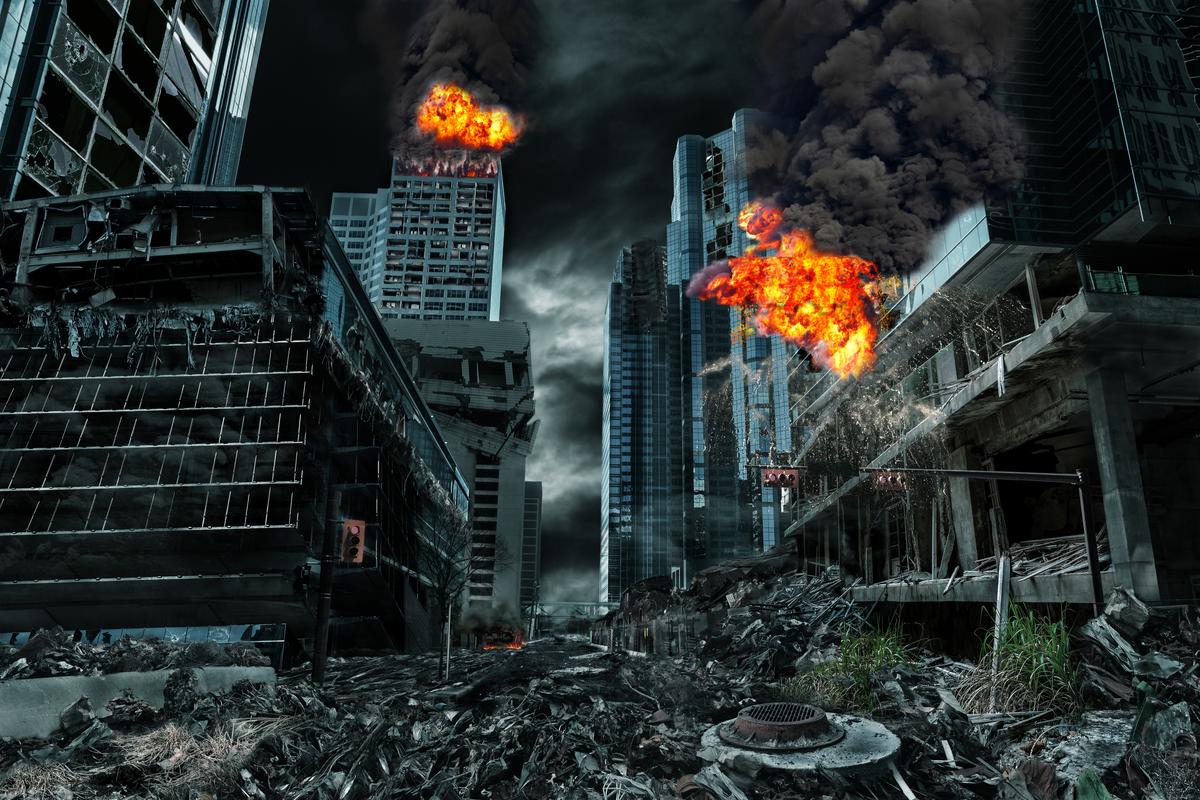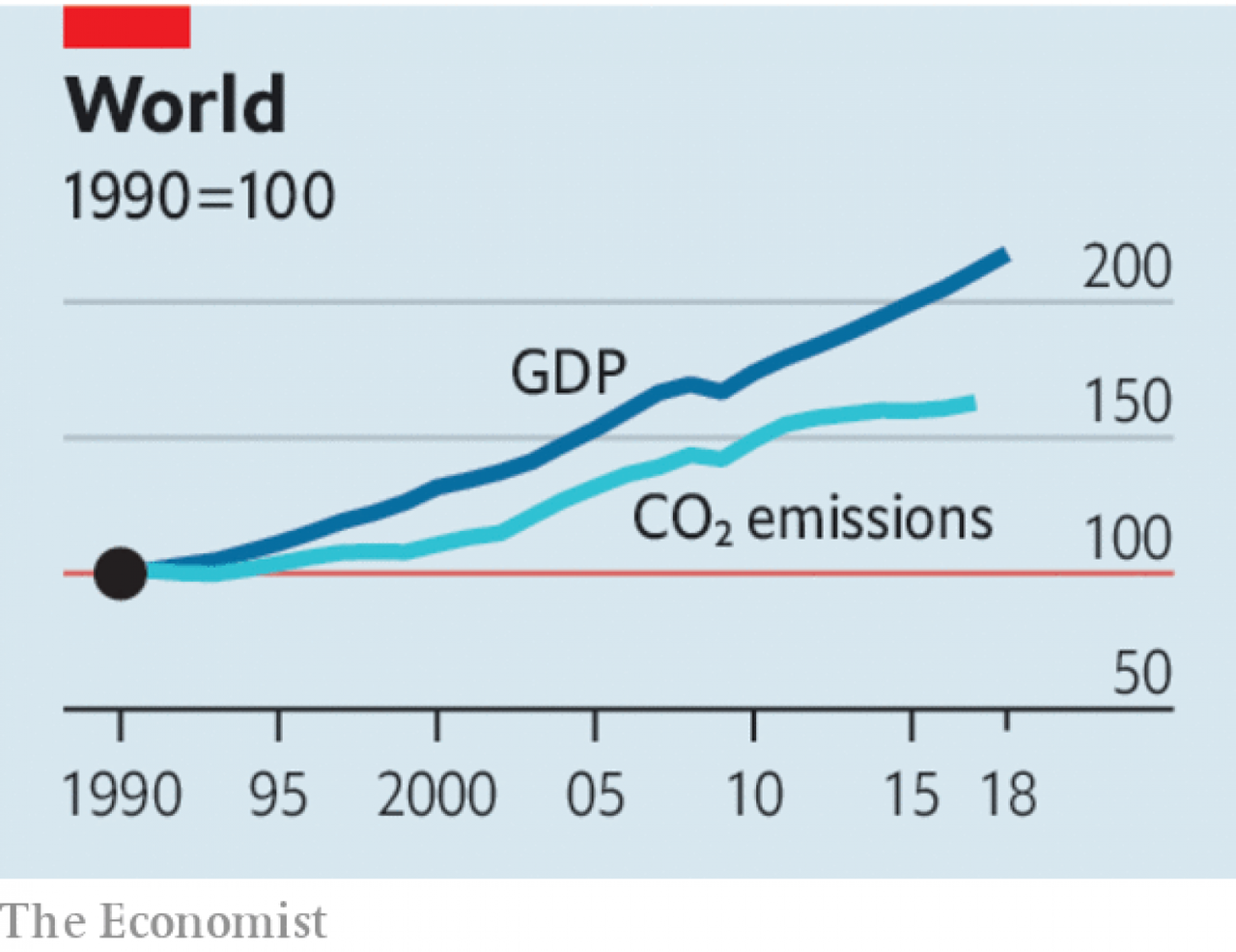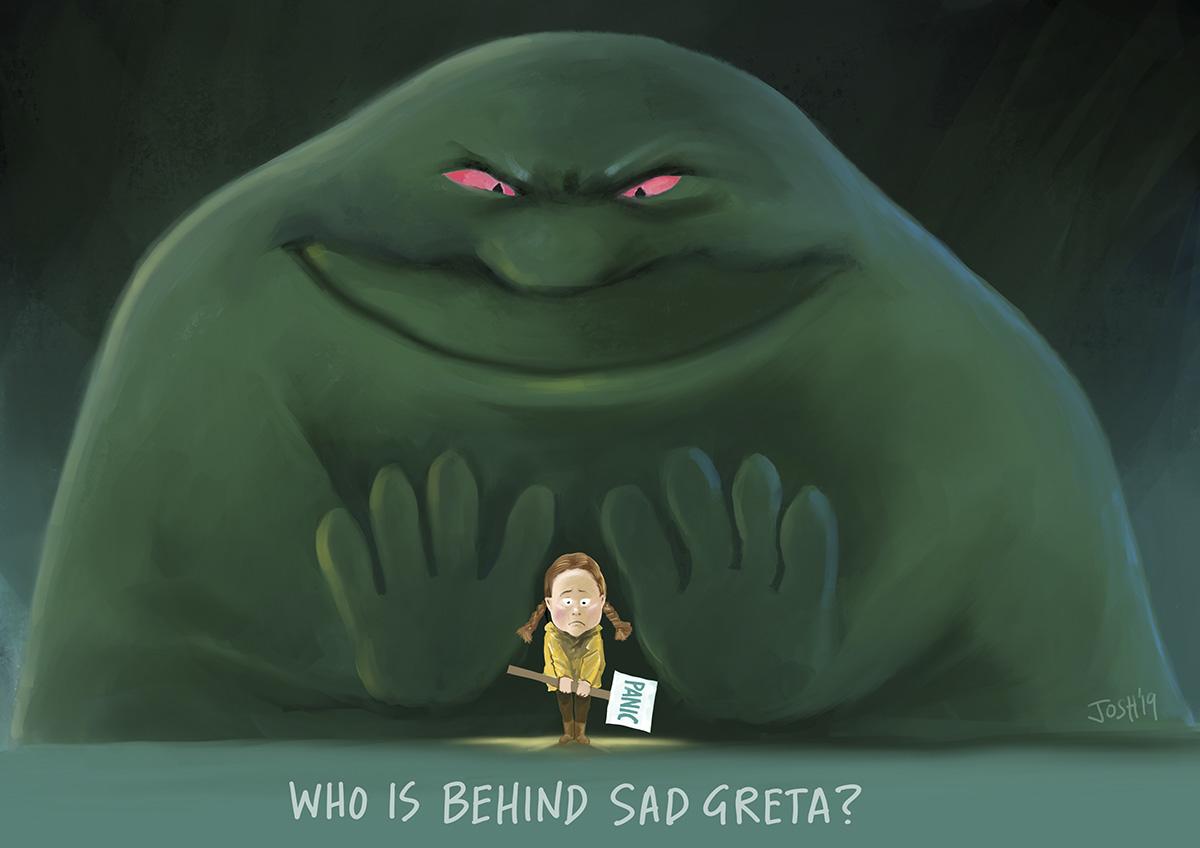The Myth Of Imminent Environmental Collapse
Authored by Joakim Book via The American Institute for Economic Research,
The ills that have haunted our species since time immemorial — starvation, illness, protection from the elements — are less prevalent than ever before. At the same time we’ve probably never been as disillusioned about the fruits of progress.
Panicking about an imminent apocalyptic disaster, people march on the streets of the most prosperous cities in all of human civilization. They chant about impending extinction of humankind or the planet itself, about an unsustainable way of life, about an invisible gas produced as a by-product of our increasingly affluent lifestyles.
Sixteen-year-olds are addressing the World Economic Forum and the UN imploring us to reconsider the irresponsibly disastrous path we’ve entered upon. Elected officials are proposing one fanciful idea after another on topics none of them seem to understand.
More than one commentator has pointed to a crisis of spirituality and how radical environmentalism has filled the void left behind by religion. Moral outrages over plastic and the Amazon are blown entirely out of proportion. Virtue signaling and “taking a stance” are more important than effecting change.
In that light, looking at actual societal collapses is relevant. When podcasts like Paul Cooper’s Fall of Civilization are trending on most platforms and the popular historian Dan Carlin’s forthcoming book The End Is Always Near is making huge waves, it is clearly time to dust off the work of esteemed geographer Jared Diamond — particularly his book Collapse: How Societies Choose to Fail or Survive, the follow-up to his Pulitzer Prize–winning Guns, Germs, and Steel (which just came out in a 20th-anniversary edition). This year he released Upheaval: Turning Points for Nations in Crisis, which is a natural continuation of the broad-brushed portrait of the fundamental challenges for human societies that he has been painting for 20 years.
Diamond's personal, insightful, and accessible writing often consists of deep dives into various case studies. He might be cherry-picking his examples, but he usually does so in well-balanced and convincing ways to illustrate his major points. In Collapse he identifies five different factors whose presence or absence explains the dozen collapsing societies that he considers:
-
Climate change (through little fault of societies themselves)
-
Eco-cide (“unintended ecological suicide”)
-
Hostile neighbors
-
Collapse of trading partners essential to upholding lifestyle
-
Societies’ own response to these four factors
As Diamond is a geographer, ecological disasters always loom large in his account of civilizations — which is supremely relevant considering today’s quasi-religious emphasis on how humans destroy their surroundings. Diamond has seemingly long been ahead of his time.
His introductory chapter in Collapse deals with Montana’s deforestation and soil-erosion problems — two topics that repeatedly appear in Diamond’s writing. The Greenland Norse overgrazed their fragile environment, which caused their nutrient-poor soils to erode. They refused to change their ways: they kept with a costly Northern European ideal of Christianity and stubbornly preferred cows to sheep even though the former were much less suited to Greenland than to the Norse’s ancestral Scandinavia. They did not learn from or establish friendly relations with their neighboring Inuits, who had successfully adopted hunting practices that allowed them to overcome the harsh Arctic climate.
The Easter Island society on Rapa Nui, one of the most isolated places on earth, is to Diamond “the closest approximation that we have to an ecological disaster unfolding in complete isolation.” When the Polynesians arrived, sometime between 800 and 1200 AD, they were met with a lush forest consisting partly of what was probably the tallest species of palm trees in existence — which is surprising to a modern visitor to the now almost treeless island. For those worrying over the Amazon forest, Easter Island is the worst possible outcome: complete deforestation. Even Diamond admits that it is a crucial warning: “The collapse of Easter Island society [is] a metaphor, a worst-case scenario, for what may lie ahead of us.”
The dispute in the scientific community that Diamond engaged in (Paul Cooper discusses research that disputes many of Diamond’s conclusions) is between an intentional human-made ecocide — an extreme obsession with Moai, those iconic rock figures — and an accidental explosion of the rat population that ate all the seeds, preventing the trees’ regeneration. Cooper also mentions that rounds of diseases by initial European visits and subsequent kidnappings by whalers in the 19th century decimated the Easter Island population. In this account, the Easter Island trees were still there, until overstocking of sheep finally tilted the ecosystem into a tailspin. One way or another, it was a human-made ecological disaster.
The collapses of lesser-known Polynesian islands (Mangareva, Henderson, and Pitcairn) are particularly interesting, as Diamond places the blame for their collapse on the ceasing of the crucial intra-island trade, vital for their inhabitants’ meager subsistence: oyster shells and critical crops from Mangareva, the “motherland island,” to Pitcairn and Henderson; volcanic glass and basalt from Pitcairn to Henderson and to Mangareva; and from Henderson to other islands, probably sea turtles and other perishables highly prized in Polynesian society. Thus, Diamond argues, “each island’s deficiencies were filled by the other islands’ surpluses.”
Drawing examples from the modern world, Diamond’s account of the Tutsi genocide in Rwanda in 1994 is both revealing and disturbing. Rather than the normal explanation given for the Rwandan genocide — colonially induced ethnic conflicts — Diamond explores an ecological interpretation. Setting the stage for the slaughter were immense overpopulation and increasingly poor farm yields, followed by tensions created through extreme demographic and societal inequality. As the cows and the farms of the victims must be redistributed to somebody else, Diamond suggests that the ultimate cause of the Rwandan genocide was overshooting that society’s ecological limits.
If there’s anything to criticize Diamond for, it is his poor grasp of economics. He seems to view world trade as zero-sum and presumes that countries need to — or ought to — be self-sufficient in resources. When Japan in the 20th century all but banned domestic logging and China more recently shifted to relying on imported timber, Diamond explicitly says that other countries “must suffer the harmful consequences of [their] deforestation.” Surely, Diamond is not suggesting that cutting down any trees, anywhere in the world, amounts to “harmful deforestation”?
In his writing, Diamond often refers to a country’s per-capita grasslands or forest coverage, as if that’s a relevant constraint in a globalized world. He talks about a country earning “foreign exchange” as if we were still in the Bretton Woods system or as if all countries have internationally worthless currencies. In a modern, globalized world with developed financial markets, freely floating exchange rates, and lots of cross-border payments, there is no need for a country to earn foreign exchange or even to run balance-of-trade surpluses — which is ironically illustrated by the modern Australia that so vexes Diamond.
In Collapse, Diamond frequently returns to the “horse race” between accelerating “development of environmental problems” and our capabilities of solving them. Economists have long been intelligently writing on this and have provided us with two fundamental — and much overlooked — insights. First, through the price mechanism, free markets with property rights ration natural resources such that they never run out. This is fundamental to all worries that forests, iron, or oil is running out — Diamond’s chapter on Australia again being a case in point.
Second, to answer Diamond’s question (“Which horse will win the race?”) it seems the economists and “Kuznets’ Curvers” — those of us who believe that emissions increase with income up to a point, after which prosperous societies clean up their environment, decreasing emissions — are on to something. As we’re getting richer, we’re also getting more able to protect ourselves from the elements — whether naturally occurring or man-made. The richer we are, the smaller the effective problem of climate change becomes, which was illustrated in the Economist’s recent issue on climate change.
If the consequences of emissions are bad and harmful to human flourishing, we must pay for mitigation, damage reduction, and/or adjustments. Those payments come either out of current income or endowed wealth — and the growth of our incomes has outpaced the growth of emissions for the last 25 years. We seem to be getting better at squeezing out economic growth from every unit of carbon emission. While it’s theoretically possible that every unit of emissions causes more harm than its associated income allows us to offset, that’s a still-debated empirical question.
In Upheaval, Diamond’s most political book thus far, he considers questions of the present and the future. He is quite clear about his negative outlook: “The issues that I discuss are the things that are still getting worse.” Despite the many discouraging examples of collapsing and struggling societies mentioned, shining through all his work is a mildly hopeful tone that societies’ fates are in their own hands.
That’s how I think we should view Diamond’s work: insightful, provocative, unconventional stories of our species that may carry some dire warnings. His flawed economic analyses do undermine some of his conclusions, but they do not detract from his storytelling. It is clear that worries about civilizational collapses by the Thunbergs and Extinction Rebellions of the world are exaggerated, as we are nowhere near the brink of disasters faced by the societies Diamond considers.
The basic question becomes one of which comparison to make: are we modern-day Australia, continuing to flourish despite its so-called ecological limits — or are we Easter Islanders or Norse Greenlanders, positioned for inevitable civilizational collapse?
https://ift.tt/2mK92Xk
from ZeroHedge News https://ift.tt/2mK92Xk
via IFTTT







0 comments
Post a Comment